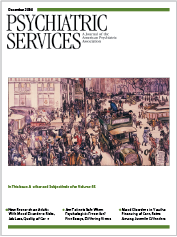Random Family: Love, Drugs, Trouble, and Coming of Age in the Bronx
Random Family: Love, Drugs, Trouble, and Coming of Age in the Bronx, is a remarkable book. Its author, Adrian Nicole LeBlanc, makes frequent contributions to magazines and newspapers. She has several master's degrees, has been a visiting scholar in journalism, and has received numerous awards for her writing. This is her first novel.
The story is set in the Bronx at the end of a fierce decade—the 1980s—when drug gangs ravaged neighborhoods, buildings, and families. LeBlanc, on the basis of ten years of observation and reporting, has captured this moment with fairness and a narrative that brings the reader right onto the street. She also gives health care providers a tremendous insight into the intricacies of the culture of poverty in urban America today. Beyond the drug wars, which appear to have been quelled, the book offers the clinician a direct view into the lives of individuals and families who are alive and well in 2004.
The novel is based on the lives of several families as they cope and make life choices. Multigenerational patterns of behavior are described; it is possible to track the lives and observe these patterns as they play out, from mother to child to grandchild. Patterns of repeating compulsively destructive behaviors are described with lucidity and compassion. The culture of poverty and deprivation translate directly into the quality of the relationships. Individuals feel excluded from the material culture, and disenfranchised. The power of the subgroup becomes almost irresistable under this pressure. The disintegration of family structure creates its own new forms of relationships. This transformation is described as characters strive and are crushed by the forces they encounter or recreate. It is possible to understand how the characters see no way out, and how the structure of services available to individuals who are embedded in such chaos renders these individuals untouched by the offerings of health care providers.
The children in these families are subject to maternal deprivation and severe disruptions in their attachments. They have difficulties of separation and in overall functioning. These problems are evident and again play out in a lack of ability to function in school and a lack of interest in learning, starting at a young age. These early traumas lead to despair and rage. Boredom and the inability to connect with any positive identification lead to risk taking, drug use, alcohol consumption, and extreme sexual promiscuity. Many of the characters in Random Family are desperate for a positive connection with any person, activity, or substance. They are without internalized skills for self-soothing or self-reflecting, and they have lost the ability to trust and engage with the broader culture. Criminal behavior, domestic violence as culture, prison culture and gang life, and drug and alcohol abuse all too clearly become substitutes for more stable living. LeBlanc makes this all come alive—the striving of real people trying desperately to make life work, to make connections, and to have something material and positive happen. Her characters suffer greatly. They are also passionate and full of life.
What can this marvelous book teach us as clinicians? Certainly we need to be mindful of cultural forces outside the mainstream that we may not know very much about. After reading Random Family one might look more closely at early trauma and the quality of attachments in clients' lives. It is possible to see clients' problems and despair, but it is also important to consider solutions that offer hope. A colleague recently said to me that the most important thing we can offer our clients is to be fully present and to enjoy them as they speak their truth, tell the story of their lives. The characters in Random Family represent with uncanny precision individuals who are alive and well today in the Bronx. These individuals are our clients in schools, hospitals, and mental health centers in urban environments around this country. How can we help them? How can we show them that they are worthy? My colleague's solution sounds so simple yet so profound. May we show them that they are worthy by showing them attention and enjoyment, something so many of these individuals have not had from their earliest moments.
Random Family would make an excellent teaching tool for medical residents, psychology students, and social work students. It is well written and could be of benefit to health care providers working with severely disenfranchised individuals and their families. The book provides a profound look into the lives of the urban poor.
Dr. Glimm is a member of the child and family team at the Bronx HIP Mental Health Center in New York.



